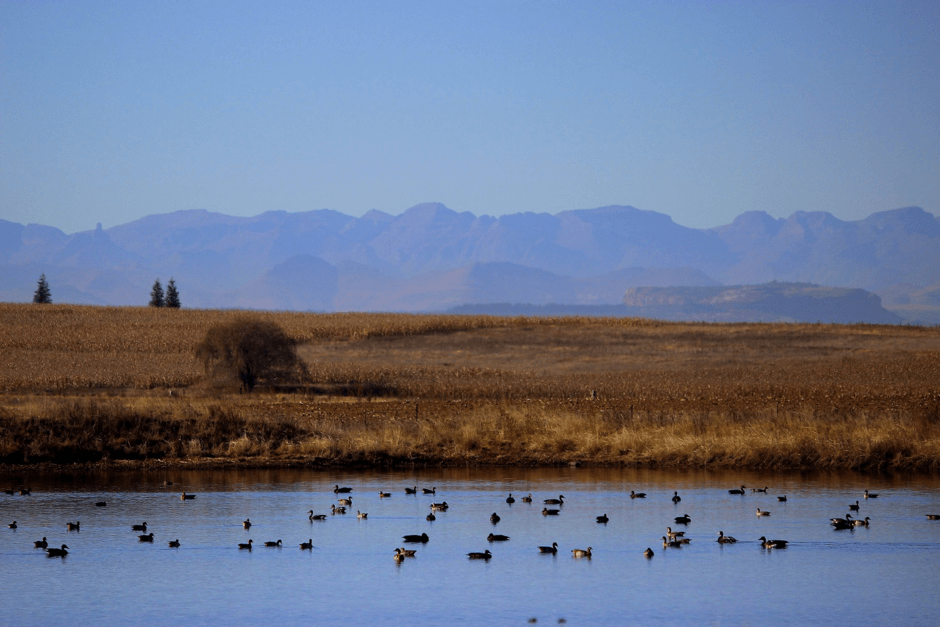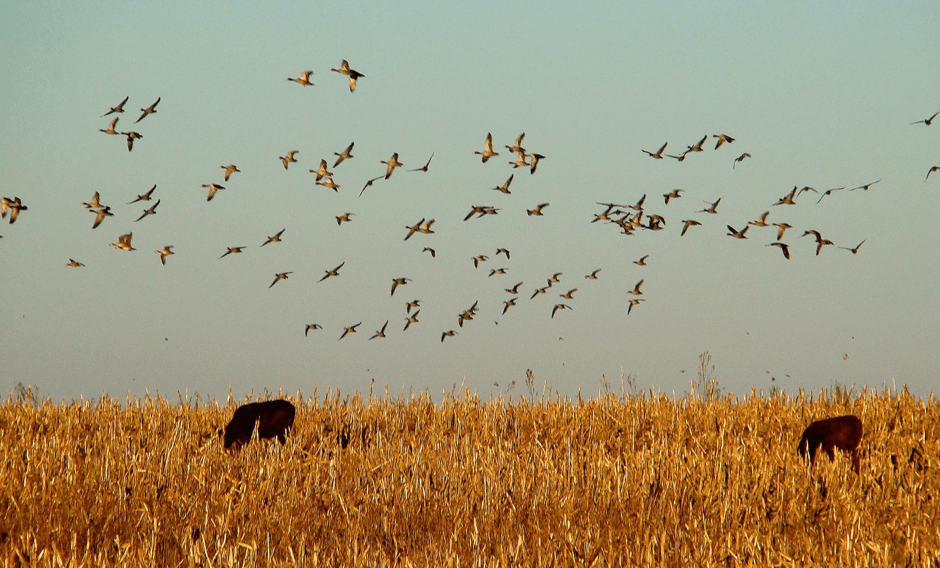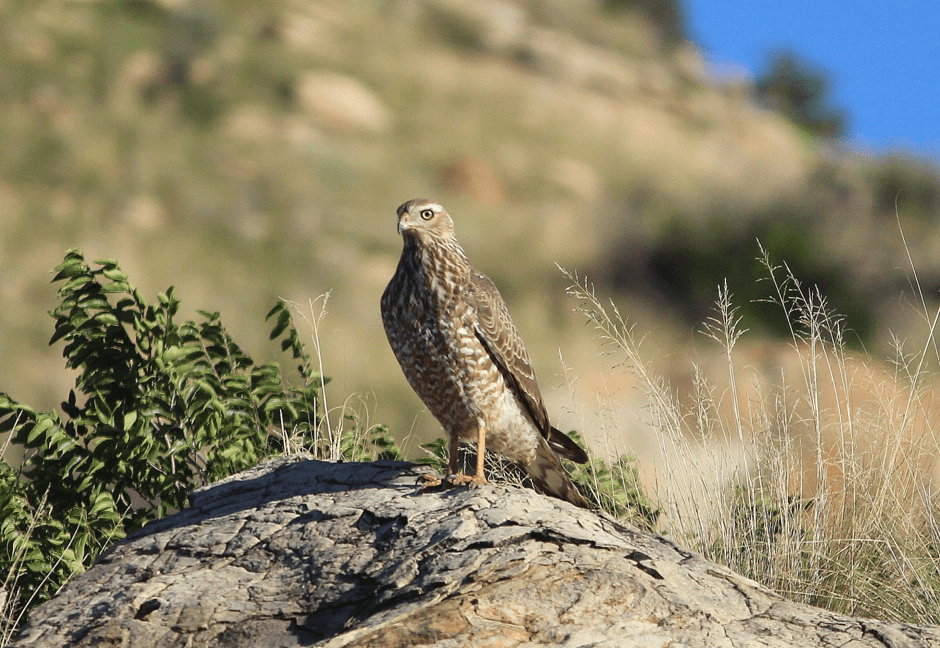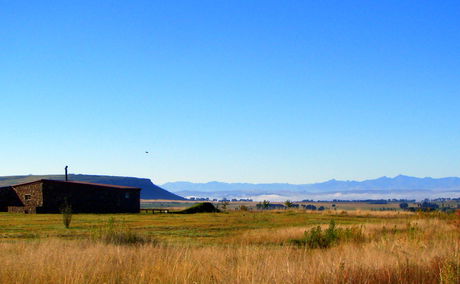Looking for a getaway with views to rival anything you have ever seen, a place so awesomely quiet you can hear the air speak, with views so vast it takes your breath away? With spacious accommodation, remote yet accessible, private, secluded, well appointed? We have that here at Amohela ho Spitskop Country Retreat & Conservancy in the Eastern Free State Highlands. Only 1 ½ hours from Bloemfontein and 3 ½ hours from...
What To Do In The Eastern Free State - Bird Watching
With the good rains of the past summer, the winter landscape of the Eastern Free State is again dotted with dams and pans filled to the brim with water, the reflection of dark blue winter skies turning the water a deep navy blue in the sunlight.

The grassy banks on the edges of dams and pans are filled with birds, grooming, some with head tucked under a wing, looking to all intents and purposes like headless birds. As you approach they take like a great flotilla to the water, and the sky seems filled with the sight and sound of flying birds, the numbers increasing daily. We have counted some 20 species of water fowl, and when you include the waders, herons, plovers, egrets, and sandpipers some 40 species of birds can be seen at local dams and pans at one time.

Excitingly, we also have at this time three species of harriers still being seen locally and on the Retreat. The black harrier which normally migrates to Natal in winter can still be seen cruising low over the grasslands of Amohela ho Spitskop. This beautiful bird is endemic to Southern Africa and it is believed there are only some 1000 birds left. Montagu’s Harrier, normally only a summer visitor, is also still seen regularly, and the highly endangered Marsh Harrier, a first time sighting at Amohela ho Spitskop which caused quite a stir, also still hunting low over grasslands each day.

The value of Conservancies such as Amohela ho Spitskop Conservancy cannot be overstressed in a World of shrinking habitat for many bird species. It is Conservancies such as these where grassland is preserved and improved, where indigenous shrubs and trees, herbs and “weeds” are allowed to flourish, that can help preserve both fauna and flora, insects, butterflies, birds and much else.
Further Reading
The white stork ciconia ciconia, that beautiful soaring bird of myth and fable, one of our absolute favourite birds here at Amohela ho Spitskop, and we await their arrival from Europe each year with excitement and anticipation. However a prolonged drought with very little rainfall here in the Eastern Free State seemed that, for the first time in many years, we would not be visited by any White Storks this year when...
When resident locally the awesome Secretary Birds stand atop their tree roost and greet the newly risen sun. Stretching and preening with amazing balance they ready themselves for the flight back to earth & another day of hunting ........


Share This Post